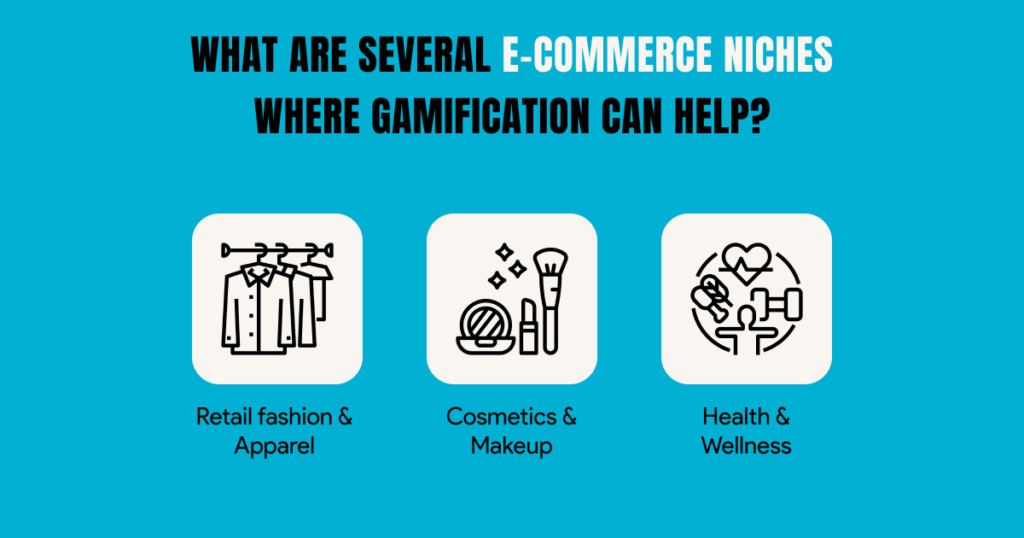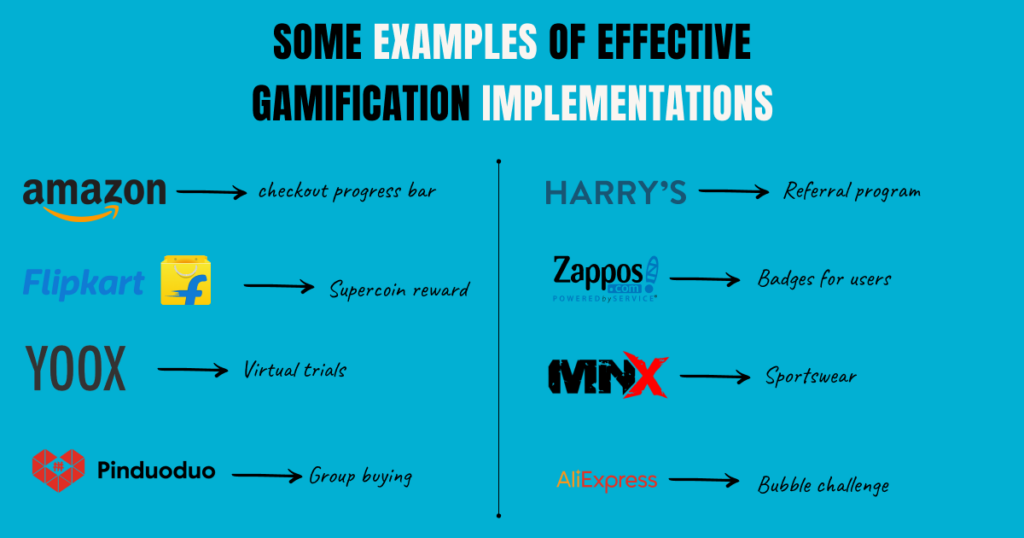Gamification can give an e-commerce business an edge over another. Especially for WooCommerce, the market is now more competitive than ever. There are different aspects where gamification can be involved for WooCommerce shops. But where do you start? How would you know it will work? Let’s cover all of that here through some real-life examples of Successful E-commerce Shop.

What are several E-commerce niches where gamification can help?
Gamification can help with a handful of different e-commerce niches and industries. However, here are some of the niches where it is most prominently useful:
Retail fashion and apparel
Fashion and accessories contribute to the highest sales among e-commerce niches. Moreover, this industry can benefit the most from gamification techniques such as rewards for repetitive purchases, contributing with reviews and photos, and referrals.
Virtual trial rooms and customization can further support gamification efforts in retail fashion and apparel. Additionally, with apparel, it is possible to introduce an upselling offer as well.
Cosmetics & makeup:
Much like the fashion industry, cosmetics, and makeup also run high with social proof and peer marketing. These products can also offer virtual try-ons so that users can get an idea of their application and outcome. Here, as well, the shop owners can introduce marketing campaigns with rewards to spread the word with the customer’s peers.
Health and wellness:
Goals, consistency, and performance are quite important in the health and fitness industry. Gamification can introduce points, badges, and even leaderboards to motivate fitness enthusiasts and to maintain some post-sales engagement. Upon excellent performance and consistency, brands can provide rewards and recognition to such users.
There are many other niches where WooCommerce industries are mimicking similar success with gamification. Now, let us dive into some of the real-life examples of gamification success in WooCommerce and e-commerce.

Some examples of effective gamification implementations
There are many e-commerce & WooCommerce platforms that leverage gamification to different extents. Let us look at some of the most renowned and remarkable use cases of gamification in e-commerce.
Amazon’s checkout progress bar:
If the largest e-commerce business worldwide is using gamification, then maybe you should look into it as well. Amazon uses gamification to visualize the checkout progress through a simple bar with milestones. It can significantly cut down cart abandonments.
Flipkart’s Supercoin rewards:
Another e-commerce platform named Flipkart has introduced Supercoins as a loyalty reward that users can redeem as cash or as offers. It cultivates brand identity and customer loyalty while making sure that the customer will come back to redeem their Supercoin collection.
Yoox’s virtual trials:
Italian fashion retailer Yoox has introduced a solution where users can create their digital avatars and try on different clothes in order to visualize how they would look in them. Yoox’s implementation into VR and trials can be very engaging and personalized for the users.
Pinduoduo’s group buying
Pinduoduo offers a special price to customers if they go through the group buying provisions. It can save users a significant amount of money and promote the solution. Group buying is the best way to sell in bulk without having to upsell aggressively to your customers. It is a win-win.
Harry’s referral program
A grooming brand that is relatively new went for an ambitious marketing campaign when they went all-in with their referral marketing campaign. Here, every user could earn a good amount of money when they are referring to Harry’s products in their family and networks.
Zappos’ badges for users
Zappos introduced badges to inspire users to write product reviews and feedback. These badges were not associated with any direct rewards, and as such, users lost some interest once they realized there was no follow-up reward or benefits for them.

MNXSportswear
A WooCommerce business oriented towards sportswear used gamification to address several challenges related to lead generation, cart abandonment, and conversion rate. Adding an exit intent popup, Funnelsio, to gamify their WooCommerce store resulted in the business with more than 500 leads, increased average order value by +18%, and reduced 25% of cart abandonment.
Aliexpress’ bubble challenge
Aliexpress also introduced a game where users could win rewards. These rewards can then be redeemed for different purchases or with particular seller vouchers on the platform.
All these implementations of gamification prove that e-commerce shopping experiences have to be fun, interactive, and engaging. These implementations from world-class e-commerce businesses prove that the need for gamification is real, and if you want to compete with such platforms with your WooCommerve business, then you might have to do it better than them.
So take your chance with gamification!
Gamification can be implemented in various ways and into different parts of your WooCommerce business. By observing the successes of other brands, you can figure out which strategies can help you in which areas. Based on this, you can also start your journey towards another successful gamification implementation.